
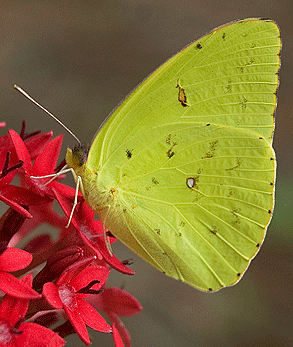
Cloudless Sulphur Butterfly
Phoebis sennae


Cloudless Sulphur Butterfly
Phoebis sennae
Photographs by Susan Leach Snyder
The cloudless sulphur butterfly mother lays one egg at a time on the tender tips of cassia and senna plants. In our garden, these plants include Bahama Cassia, Privet Senna, Candlestick Bush, and Glaucous Cassia.
The egg hatches and a tiny caterpillar begins eating and growing.
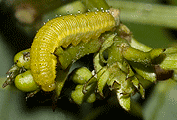
The size of the egg, caterpillars, pupa, and adult have been greatly magnified in these photographs. As shown at left, a 10-day old caterpillar is less than two inches long.
Cloudless sulphur caterpillars can be yellow as shown in the photographs above and left, or green as shown immediately below; but regardless of its color, each caterpillar has a yellow stripe along its sides. Caterpillars vary in the number and size of blue markings. Some have no blue markings, while others have small spots or wide bands. The body has rows of short black points.
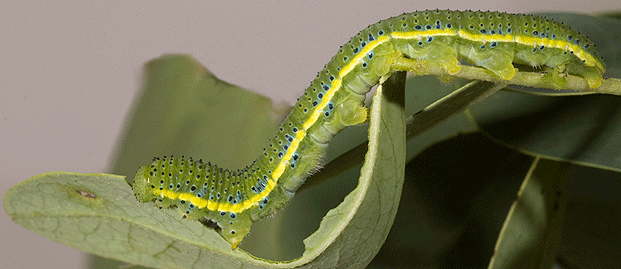
Caterpillars spend most of the time eating.
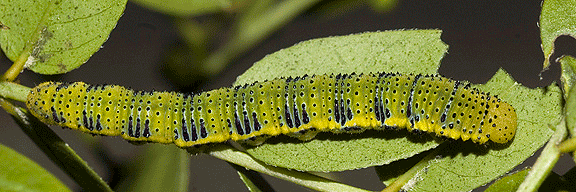
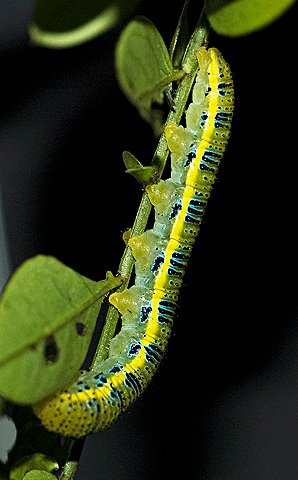
A cloudless sulphur caterpillar molts about 4 times prior to pupating. The caterpillar at right is just about ready to crawl to a place to pupate. The caterpillar below at left attached itself to the glass wall of an aquarium. The one below at right attached to the screen at the top of the aquarium.
In short time, each caterpillar spins tiny silk threads from which it hangs. The photograph at right below shows silk at its posterior end and at the center or girdle of its body.
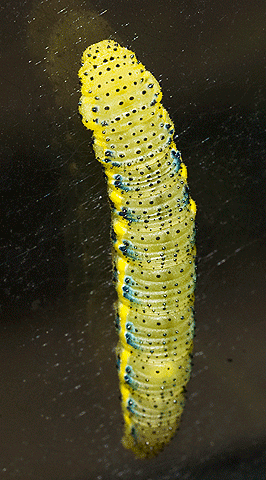
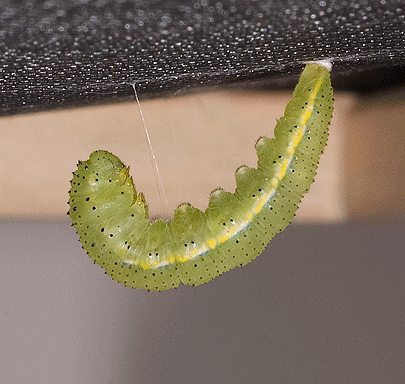
About a day later, the caterpillar molts one more time and the transformation to a chrysalis begins. The chrysalis breaks out of the caterpillar skin. As the chrysalis contorts its body, the expelled caterpillar skin is slowly pushed up to the posterior end of the animal and the skin falls to the ground.
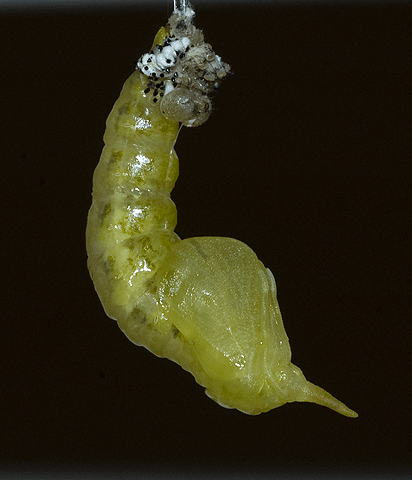
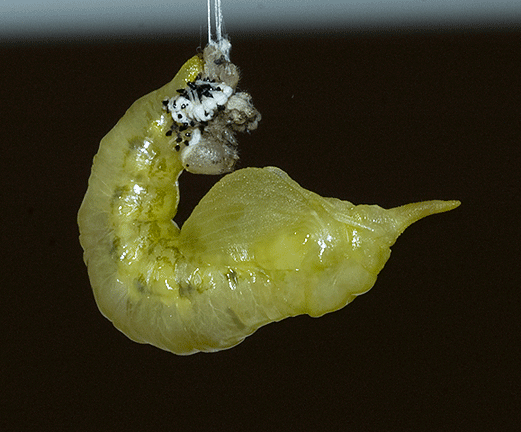
The chrysalis stops moving and hardens to a shape that closely resembles a leaf of the senna and cassia plants... great camouflage! In the photo at left below, the pointed head of the chrysalis is at the bottom of the photograph. The veins of its developing wings are visible above its head. Strands of silk at the tip of its developing abdomen and its girdle are all that support its weight while it slowly transforms into a butterfly.
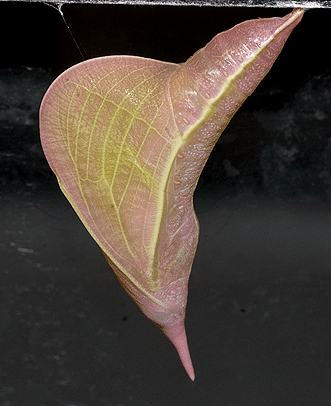
Several weeks later, the outside of the chrysalis breaks apart and the adult climbs out. Blood from the newly emerged adult's body is forced into the veins of its wings. The wings fold out, dry and become rigid.
At this point, the butterfly can fly, forage for nectar, and mate.
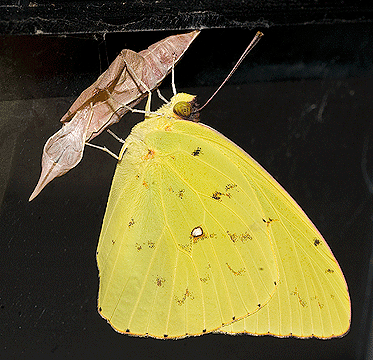
___________________________________
Links:
Index to Butterfly and Moth Visitors to the Conservancy Ecotone Trail
Index To Photographs of Plants in the Gardens
Conservancy of Southwest Florida Ecotone Home Page
Conservancy of Southwest Florida Home Page.
Please report errors to Susan Snyder at susanleachsnyder@gmail.com